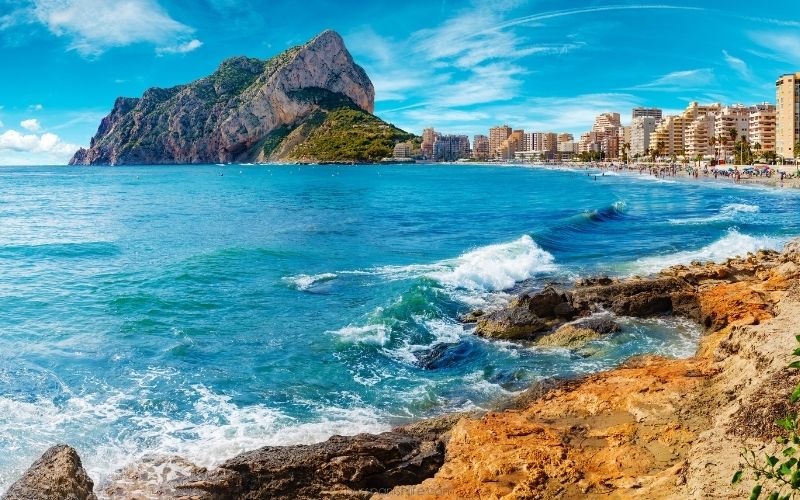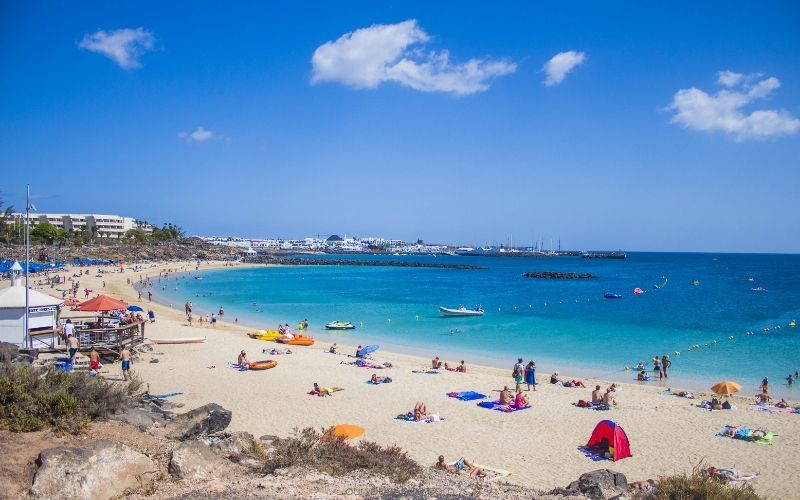One of the reasons why Spain is such a popular country amongst tourists is for its appeal as a summer destination.
Most people want to visit Spain in order to enjoy the hot weather, soaking up the sun on the amazing beaches, and swimming in the beautiful Mediterranean Sea.
That is also why the summer months are the peak season of tourism within Spain!

So, let’s say that you are planning a trip to Spain, deliberately during the summer so you can enjoy the best that it has to offer.
When do you plan it for? As in, when exactly is summer in Spain? And how hot does it even get? Are the summers extreme over there?
We can answer these questions and more, as we are going to tell you everything you need to know about summer in Spain, including when it is, and how hot it gets.
Does that sound good? Then let’s get right into it!
When Is The Summer Season In Spain?
The summer season in Spain lasts quite a long time, as it boasts of amazing weather and long sunny days.
Technically speaking, as Spain belongs to the Northern Hemisphere, its summers last from the 21st of June to the 23rd of September, of each year. Temperature-wise, Spain’s hottest period goes from June to the end of August, although the shoulder months of May and September can also have pretty good weather.
In schools, children break away for the summer from the end of June to the beginning of September, which aligns with the summer temperatures.
The heart of summer, which is the hottest month, is usually July, paired up with August, and then followed by June.
The end of July and the beginning of August is when you will usually get the highest temperatures!
How Hot Does It Get In Spain During The Summer?
If you’re not used to the heat, experiencing summer in Spain might be a little overwhelming at first, as the temperatures can get that high.
However, they are never too extreme (as a general rule), and they are easy to deal with as long as you stay in the shade, spend some time in the water, and have some air conditioning at home.
But…how hot exactly does it get in Spain during the summer? What are the average temperatures?
The truth is that it depends on where in Spain you are.
Spain is quite big (for a country in Europe), and it has many different microclimates depending on the region you find yourself in, so we can’t exactly give you one general average temperature for the entire country!
(Well, we could, but it wouldn’t be an accurate representation of summer there).
So instead, we’re going to give you some of the average summer temperatures for different main parts of Spain, so that you can see the slight differences between areas of the country during the months of June, July, and August.
Here are some average summer temperatures in Spain, according to specific cities:
- Barcelona: 84 high to 68 low (degrees Fahrenheit)
- Madrid: 89 high to 62 low (degrees Fahrenheit)
- Valencia: 88 high to 62 low (degrees Fahrenheit)
- Palma (Mallorca): 86 high 64 low (degrees Fahrenheit)
- Granada: 93 high to 57 low (degrees Fahrenheit)
- Sevilla: 97 high to 63 low (degrees Fahrenheit)
- Bilbao: 79 high to 55 low (degrees Fahrenheit)
- Santiago de Compostela: 77 high to 53 low (degrees Fahrenheit)
- Tenerife (Canary Islands): 83 high to 66 low (degrees Fahrenheit)
As you can see, there is quite some variety within the average summer temperature in Spain, according to what city you find yourself in!
As a general rule, the coastal areas of the Mediterranean, as well as the Canary Islands, have a mild summer with amazing hot temperatures that don’t get too overwhelming.
They have highs of 88 degrees Fahrenheit or so, with the odd hotter day, and lows of about 63 degrees Fahrenheit or so.
Basically, they are the perfect summer weather, hot but not too hot, paired with the sea breeze.

The downside is that these cities have very high levels of humidity, so the heat, although not extreme, will stick to your skin causing you to sweat quite a bit!
The inner middle regions of Spain are known for having the most extreme weather, getting very hot during the summer, and very cold during the winter.
During the summer season, they will get highs of around 89 degrees Fahrenheit or so, and lows of around 62 degrees Fahrenheit.
During the middle of the day, when the heat is at its peak, it can be pretty dangerous, but as the heat is dry, with very little humidity, you can easily find refuge in the shade.
The Northern regions of Spain, with cities such as Bilbao, and the regions bordering the Atlantic Ocean, with cities such as Santiago de Compostela, aren’t as hot as the rest of the country.
They will get highs of around 78 degrees Fahrenheit and notable lows of around 54 degrees Fahrenheit. They are the places to go for a cooler summer and it is also where it rains the most throughout the year!
As for the Southern regions of Spain, especially cities within Andalusia, this is where the summer is the most extreme.
They will get unbearable averages reaching around 97 degrees Fahrenheit, although during the hottest days of August the temperatures can spike up to around 106 degrees Fahrenheit or so!
Locals in these cities know that during the summer, you should not be outdoors during the hours of midday, which is why sleeping the siesta is such a popular tradition!
It is far too dangerous to be out in the sun when it is at its highest, so instead life functions during the morning and evening.
Final Thoughts
So…when is summer in Spain?
The months of summer, in Spain, are June, July, and August.
Although you can start to feel the summer weather from the end of May to the beginning of September.
The exact average temperatures will vary from place to place, as different regions in Spain have slight differences in climate.
For the best Spanish summer experience, we recommend going to coastal areas of the Mediterranean, as the weather is hot and sunny, but never too overwhelming!
(Plus you have access to the beautiful sea in order to cool down when needed).
Related:
